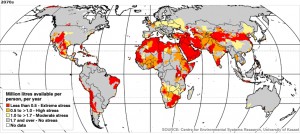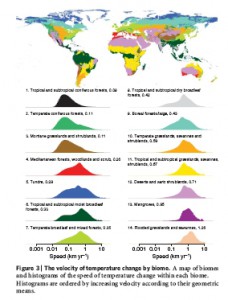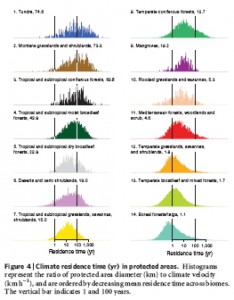- Locavore carnivores learn their chops.
- Researchers from Michigan to study drought in East Africa.
- Researchers from Michigan to improve African access to research.
- Get online to save the Amazon.
- “When the National Animal Germplasm Program (NAGP) opened its doors a decade ago, it started out with genetic material from 40 lines of chicken…”
- And today’s genome sequencing project is…
- Hunting wapato.
- Mexican agriculture comes to LA.
- Today’s answer to climate change is…
Nibbles: Breeding, Vegetables, Early agriculture, Breeding course, Nabhan, Gardens, Sequencing twice, er no, once.
- Solanum porno.
- Veggie tourism.
- Something else to blame climate change for. Not.
- Wanna learn breeding?
- Gary does Turkey.
- Podcast on school gardens.
- Department of improbable claims: Sunflower genome holds the promise of sustainable agriculture.
- Ok then Mr Cynical, how about woodland strawberry, then?
- Not so fast, Mr Sunshine: No strawberry genome ::sniff::
Nary a drop to drink
The BBC had an interesting series of maps in December last year on the effects of climate change, economic and population growth on per-capita water availability, based on the work of Martina Floerke and colleagues at the University of Kassel in Germany. Here’s the picture for 1961-90. Red is bad.
And here is the 2070s. Click to enlarge.
Doesn’t look good, particularly for Central and West Asia, and both southern and North Africa. That’s where your drought tolerant crop varieties are going to come in useful, I guess. And not just that. But I don’t understand how Australia gets away with it so lightly.
How fast will this climate change be anyway?
![]() Well, in terms of distance along the Earth’s surface, about 400 m per year on average, ranging from 80 m per year in mountainous regions to 1.26 km per year in deserts. That’s according to a new paper in Nature by Loarie et al. ((Loarie, S., Duffy, P., Hamilton, H., Asner, G., Field, C., & Ackerly, D. (2009). The velocity of climate change Nature, 462 (7276), 1052-1055 DOI: 10.1038/nature08649)) Compare that with figures of postglacial migration rates of <100 m per year for some trees. Here’s a map of the speed of temperature change by biome from the Nature paper (click to enlarge).
Well, in terms of distance along the Earth’s surface, about 400 m per year on average, ranging from 80 m per year in mountainous regions to 1.26 km per year in deserts. That’s according to a new paper in Nature by Loarie et al. ((Loarie, S., Duffy, P., Hamilton, H., Asner, G., Field, C., & Ackerly, D. (2009). The velocity of climate change Nature, 462 (7276), 1052-1055 DOI: 10.1038/nature08649)) Compare that with figures of postglacial migration rates of <100 m per year for some trees. Here’s a map of the speed of temperature change by biome from the Nature paper (click to enlarge).
And here’s the “persistence time” for protected areas in different biomes, i.e. the diameter of protected areas divided by the climate velocity.
The persistence time — which is how long it takes for the current climate to cross a protected area — exceeds 100 years for only about 8% of protected areas. And that, dear reader, is why we need protected areas that are larger and more connected. Oh, and genebanks.
Nibbles: Vavilov on couscous, Molecular studentships, Goat genetics, Svalbard Global Seed Vault, Sweet potato, New Agriculturist, Vietnam and CC, Liberian ag research, Cuisine
- Couscous deconstructed.
- China and Bioversity collaborate on molecular marker training.
- Neolithic legging helps unravel the history of the goat in Europe.
- Dag’s cool Svalbard pix.
- CIP launches Sweetpotato Action for Security and Health in Africa (SASHA).
- The new New Agriculturist does markets.
- Climate change and rice cultivation in the Mekong Delta.
- The perils of agricultural research in Liberia: one trial up in smoke, another stolen. Bummer.
- Ok, I had no idea there was a Tasting Cultures Foundation. Thanks, Facebook.



